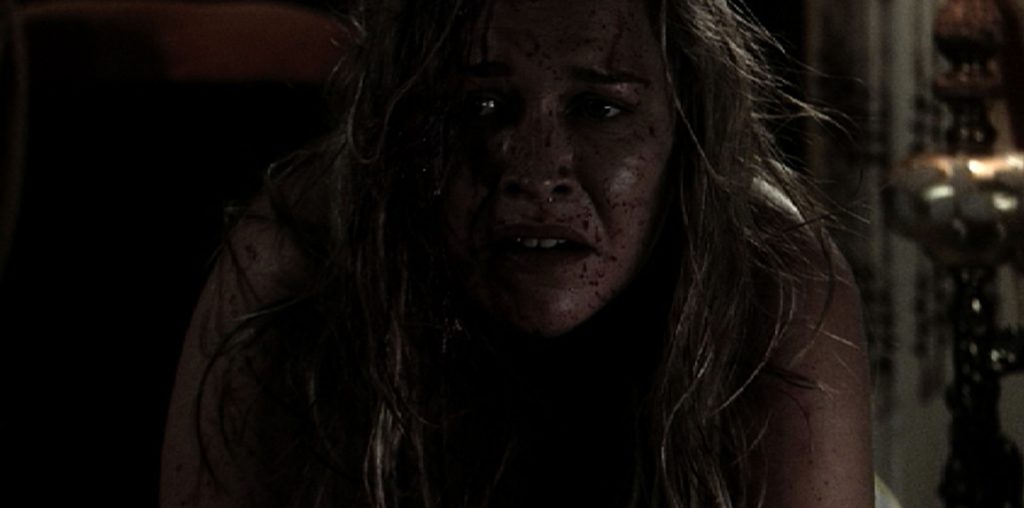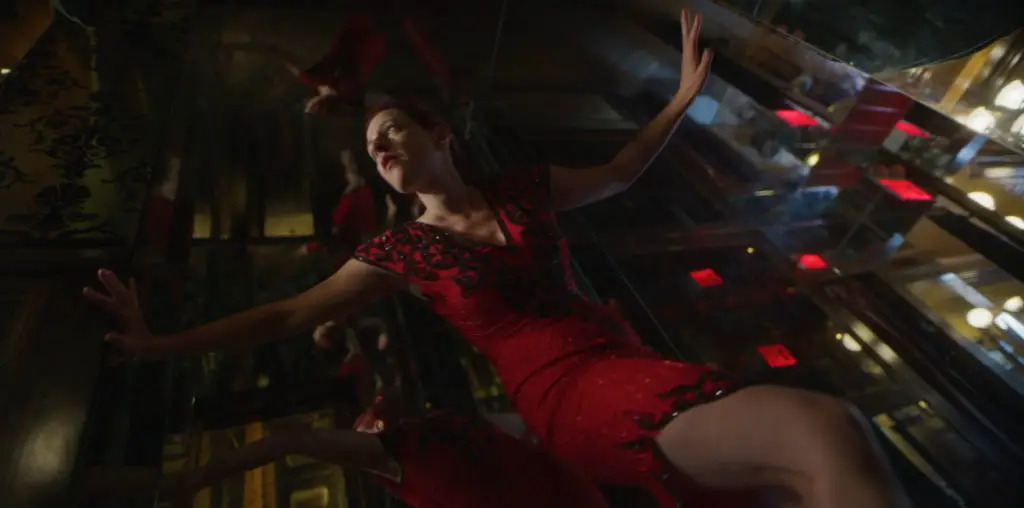
A highly evocative and poetic collage of images and sounds, Darrin Martin’s “The Knocking” immediately seems as if it is obliquely referring to the Holocaust. Many of the shots are grainy black and white footage of Polish cities, with the picture constantly shaking as if being caught in the film projector’s gate, giving the film a tone of great anxiety. (Analogue video noise is also used to the same effect.) A few shots directly show ruins or internment camps, and the film abounds in references to trains, which always evoke World War II for me. There are shots throughout of a young man at a table in a train’s dining car, with images rushing by behind him. He is seen either eating or playing cards. Shots of traffic signs seem to invoke the power of the State. But the most powerful evocation of fascism comes from the abrupt, startling sound of someone knocking on a door, a sound amplified with heavy reverb. This sound immediately brings to mind life under a dictatorship, and the constant fear of The Knock At The Door. All of these things combine to create the feeling of an anxious nightmare.
The soundtrack to this film is brilliantly constructed to heighten this atmosphere. Machine noises, gunshots, and the sounds of trains are all combined with the repeated knocking. Periodically, we hear a man’s voice, like the voiceover in an educational film, reciting numbers. These numbers sound like a desperate attempt to bring order and reason to terrifying memories, memories which are too scary to name directly. The numbers become increasingly distorted as well as completely out of order, and this increases the feeling that order and reason are slipping away.
The black and white images often swing back and forth between positives and negatives, suggesting that the young man is living simultaneously in two worlds, the past and the present. But the two worlds could also be male and female, as he is sometimes seen wearing a cocktail dress. As the knocks on the door become more insistent, he looks around nervously, but continues to eat his meal.
Nothing actually “happens” in this film, except that, through Martin’s expert collage of images and sounds, the feeling of dread is continually raised. “The Knocking” is a great example of how, by using images and sounds which are blurred, distorted, and ambiguous, an artist may create a film world with an incredibly specific and affecting emotional texture.

